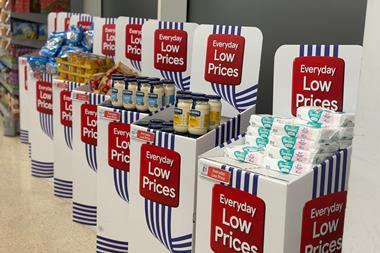Was Sainsbury’s automated fulfilment system flawed from the start or was it just badly executed?
Tesco may have stolen a march on its rivals in the 1990s when it came to investing in its supply chain, conceded Sainsbury’s director of supply chain Andy Banks back in early 2003, “but I have absolutely no doubt we will leapfrog them again when we have finished what we are doing”.
What Banks’s boss - Sainsbury’s ex-supply chain director Martin White - had not banked on, however, was Sir Peter Davis’ insistence that his seven-year project could be crammed into just three years. With hindsight, White should have stuck to his guns.
Despite months of trials, compliance manuals, meetings and now the threat of fines for non-compliance, Sainsbury has proved unable to shift fast-moving goods efficiently through its automated fulfilment factories at Hams Hall and Waltham Point.
Deliveries are still being refused at depots, advanced shipping notes are late and inaccurate, read accuracy on barcodes remains “horrendous” and it is still relying on the old network it was supposed to have ditched months ago. Many smaller suppliers are still having problems generating Advanced Shipping Notes on the Infolink web site and cannot seem to build and label pallets in the way that Sainsbury wants.
Whether these problems can be resolved without ripping out the automation and starting again is a moot point, says one retail logistics source. “These depots were custom-built - and if they are not working, there’s not a quick fix.
“Having a clutch of very large facilities fed via consolidation centres was a sound concept,” he adds. “Automating fast-moving goods and fresh is not.”
As one supplier observes: “The system relies on a degree of perfection that is not attainable in the real world. A barcode won’t be read by a fixed reader if the shrinkwrap is in the way, if it’s at the wrong height, if the pallet got moved in transit - it won’t scan.”
The arrival of Safeway logistics guru Lawrence Christensen to shake things up is a good thing, say suppliers, but he will need the courage to take the same long-term look at Sainsbury’s supply chain that White did, and bosses may not like what he finds.
Tesco may have stolen a march on its rivals in the 1990s when it came to investing in its supply chain, conceded Sainsbury’s director of supply chain Andy Banks back in early 2003, “but I have absolutely no doubt we will leapfrog them again when we have finished what we are doing”.
What Banks’s boss - Sainsbury’s ex-supply chain director Martin White - had not banked on, however, was Sir Peter Davis’ insistence that his seven-year project could be crammed into just three years. With hindsight, White should have stuck to his guns.
Despite months of trials, compliance manuals, meetings and now the threat of fines for non-compliance, Sainsbury has proved unable to shift fast-moving goods efficiently through its automated fulfilment factories at Hams Hall and Waltham Point.
Deliveries are still being refused at depots, advanced shipping notes are late and inaccurate, read accuracy on barcodes remains “horrendous” and it is still relying on the old network it was supposed to have ditched months ago. Many smaller suppliers are still having problems generating Advanced Shipping Notes on the Infolink web site and cannot seem to build and label pallets in the way that Sainsbury wants.
Whether these problems can be resolved without ripping out the automation and starting again is a moot point, says one retail logistics source. “These depots were custom-built - and if they are not working, there’s not a quick fix.
“Having a clutch of very large facilities fed via consolidation centres was a sound concept,” he adds. “Automating fast-moving goods and fresh is not.”
As one supplier observes: “The system relies on a degree of perfection that is not attainable in the real world. A barcode won’t be read by a fixed reader if the shrinkwrap is in the way, if it’s at the wrong height, if the pallet got moved in transit - it won’t scan.”
The arrival of Safeway logistics guru Lawrence Christensen to shake things up is a good thing, say suppliers, but he will need the courage to take the same long-term look at Sainsbury’s supply chain that White did, and bosses may not like what he finds.


















No comments yet